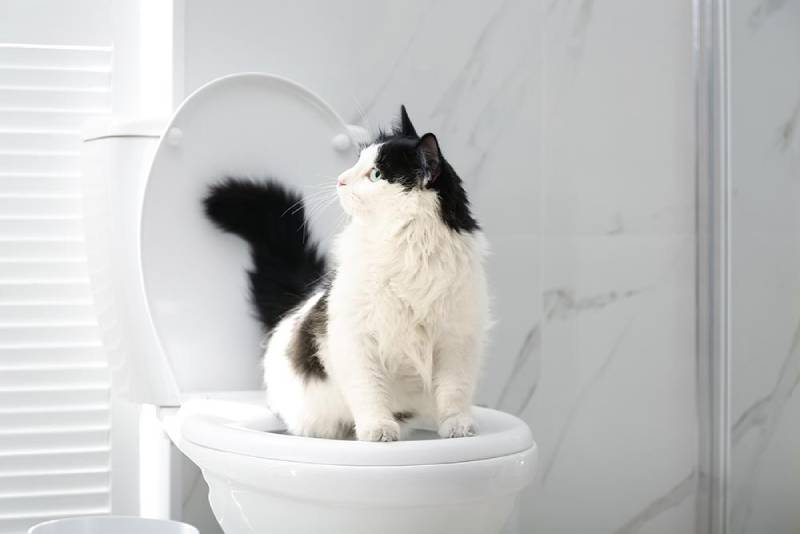Dangers of Disposing Cat Poop in Your Toilet - Precautionary Steps
Dangers of Disposing Cat Poop in Your Toilet - Precautionary Steps
Blog Article
How do you feel when it comes to Can You Flush Cat Poop Down The Toilet??

Introduction
As cat owners, it's important to bear in mind exactly how we get rid of our feline close friends' waste. While it might appear convenient to flush feline poop down the bathroom, this method can have harmful repercussions for both the setting and human wellness.
Ecological Impact
Purging pet cat poop presents harmful pathogens and parasites right into the water supply, posing a substantial threat to marine ecological communities. These contaminants can adversely impact aquatic life and concession water high quality.
Health and wellness Risks
In addition to environmental concerns, purging feline waste can likewise position health threats to human beings. Feline feces might consist of Toxoplasma gondii, a parasite that can create toxoplasmosis-- a potentially severe ailment, particularly for expecting ladies and people with damaged body immune systems.
Alternatives to Flushing
Thankfully, there are more secure and a lot more accountable ways to deal with pet cat poop. Take into consideration the following choices:
1. Scoop and Dispose in Trash
One of the most common approach of throwing away cat poop is to scoop it right into a biodegradable bag and throw it in the garbage. Be sure to use a specialized trash scoop and throw away the waste immediately.
2. Usage Biodegradable Litter
Select biodegradable pet cat trash made from products such as corn or wheat. These trashes are environmentally friendly and can be securely dealt with in the garbage.
3. Bury in the Yard
If you have a backyard, think about burying pet cat waste in a designated area far from vegetable yards and water sources. Make sure to dig deep enough to stop contamination of groundwater.
4. Install a Pet Waste Disposal System
Purchase a pet waste disposal system particularly designed for feline waste. These systems use enzymes to break down the waste, minimizing smell and environmental effect.
Conclusion
Accountable pet ownership expands beyond supplying food and sanctuary-- it also includes proper waste administration. By avoiding flushing cat poop down the commode and opting for alternate disposal techniques, we can decrease our environmental footprint and shield human health.
Why Can’t I Flush Cat Poop?
It Spreads a Parasite
Cats are frequently infected with a parasite called toxoplasma gondii. The parasite causes an infection called toxoplasmosis. It is usually harmless to cats. The parasite only uses cat poop as a host for its eggs. Otherwise, the cat’s immune system usually keeps the infection at low enough levels to maintain its own health. But it does not stop the develop of eggs. These eggs are tiny and surprisingly tough. They may survive for a year before they begin to grow. But that’s the problem.
Our wastewater system is not designed to deal with toxoplasmosis eggs. Instead, most eggs will flush from your toilet into sewers and wastewater management plants. After the sewage is treated for many other harmful things in it, it is typically released into local rivers, lakes, or oceans. Here, the toxoplasmosis eggs can find new hosts, including starfish, crabs, otters, and many other wildlife. For many, this is a significant risk to their health. Toxoplasmosis can also end up infecting water sources that are important for agriculture, which means our deer, pigs, and sheep can get infected too.
Is There Risk to Humans?
There can be a risk to human life from flushing cat poop down the toilet. If you do so, the parasites from your cat’s poop can end up in shellfish, game animals, or livestock. If this meat is then served raw or undercooked, the people who eat it can get sick.
In fact, according to the CDC, 40 million people in the United States are infected with toxoplasma gondii. They get it from exposure to infected seafood, or from some kind of cat poop contamination, like drinking from a stream that is contaminated or touching anything that has come into contact with cat poop. That includes just cleaning a cat litter box.
Most people who get infected with these parasites will not develop any symptoms. However, for pregnant women or for those with compromised immune systems, the parasite can cause severe health problems.
How to Handle Cat Poop
The best way to handle cat poop is actually to clean the box more often. The eggs that the parasite sheds will not become active until one to five days after the cat poops. That means that if you clean daily, you’re much less likely to come into direct contact with infectious eggs.
That said, always dispose of cat poop in the garbage and not down the toilet. Wash your hands before and after you clean the litter box, and bring the bag of poop right outside to your garbage bins.
https://trenchlesssolutionsusa.com/why-cant-i-flush-cat-poop/

We were made aware of that report on How to Dispose of Cat Poop and Litter Without Plastic Bags from a friend on another site. Do you know about another person who is in to the subject? Do not hesitate to promote it. Thanks for going through it.
Book Appointment Now Report this page